Alas! for this gray shadow, once a man—
So glorious in his beauty and thy choice,
Who madest him thy chosen, that he seem’d
To his great heart none other than a God!
Alfred, Lord Tennyson could write. The lines above come from Tithonus, and they reminded me of players who are at the end of their careers: once so glorious in their ability that they seemed none other than a Hall-of-Famer.
Let’s look at the elder statesmen from the 2021/2022 season. For each one I’ll show their Career Productivity Rating chart and their Career Value Rating chart. Which ones belong in the Hall of Fame? See if you agree with me.
Zdeno Chara – 45
Chara ranked about 150th in the league in defensemen this season, which is the equivalent of a #5D. He will announce his future in September, and he would play if he could get a team to pay him his value. He has already earned a tad over $100 million playing in the NHL, and I hope he’s put some aside for a rainy day.
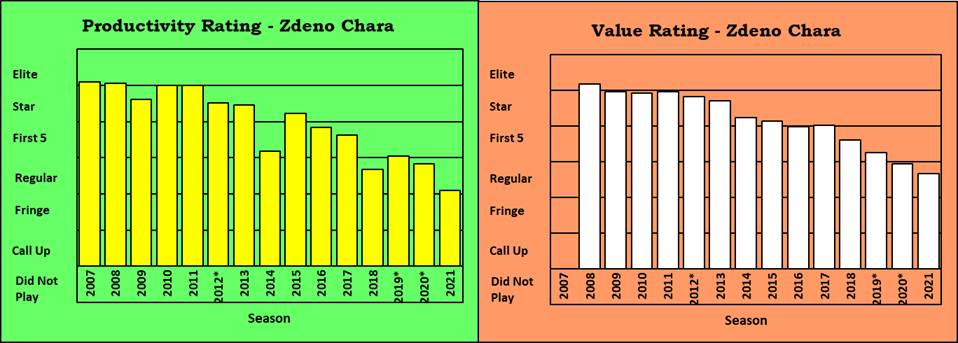
Until he hit his 40s, he was declining gracefully. His VR at age 38 (2014) was 8.48, towards the bottom of the VR-Star category. At 41 (2017) he was still in the VR-Star category. He has declined precipitously since 2017, his VR-Score down a full category-and-a-half.
Chara is one of the reasons I’d like to have data from the seasons immediately before 2007/2008. I have a feeling those were his best years.
Should Chara be in the Hall of Fame? If you think he shouldn’t be, then there are probably only two or three people in the hall whose selection you agree with. He’s an obvious choice for the hall of fame. Nine VR-Star seasons, one VR-Elite season, and some of his best seasons came before the time when detailed statistics were made available.
Joe Thornton – 43
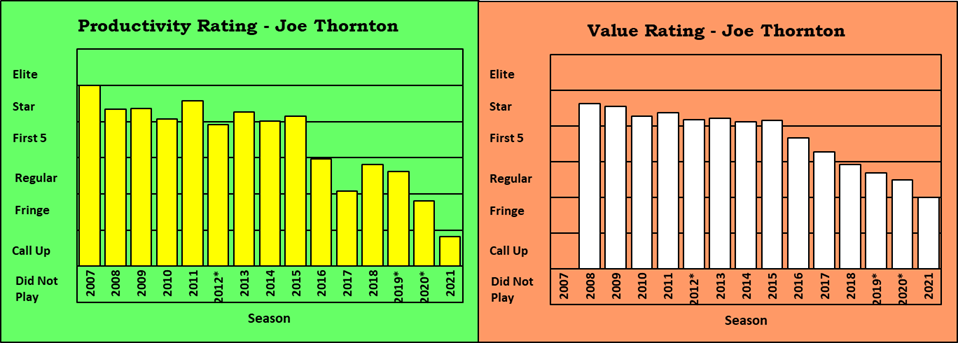
Thornton was consistently valuable through the 2015/2016 season. Looking at his PR and VR charts, you can see that he has been in a constant state of decline for years now, and that while the decline is not rapid, it is not gentle either.
What you can’t see from the charts is how good he was before 2007/2008. I can’t see that either, of course, but I can see his scoring statistics. From 2000/2001 through 2006/2007 he scored more than a point a game: 85-point scorers are good players.
Hall of Fame? Yes, based solely on his regular season accomplishments.
Andy Greene – 40
Short of his 2006/2007 season, we have all the detailed statistics of Andy Greene’s career.
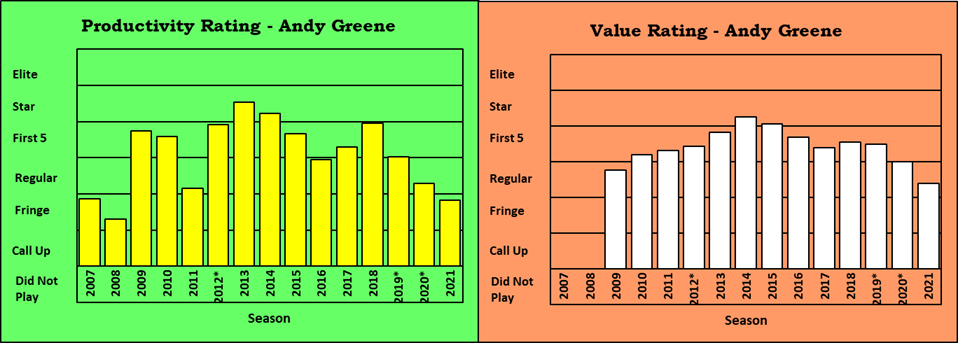
He is the first player on this list whose Career VR chart has very few seasons at VR-Star or above (two seasons). He has had to deal with some injuries over the years, as a look at his PR Chart will show. He missed many games in 2008/2009, 2011/2012 and 2016/2017. Those missed games reduced both his PR-Scores and his VR-Scores.
Is Andy Greene a Hall-of-Famer? Not as far as I’m concerned.
Mark Giordano – 39
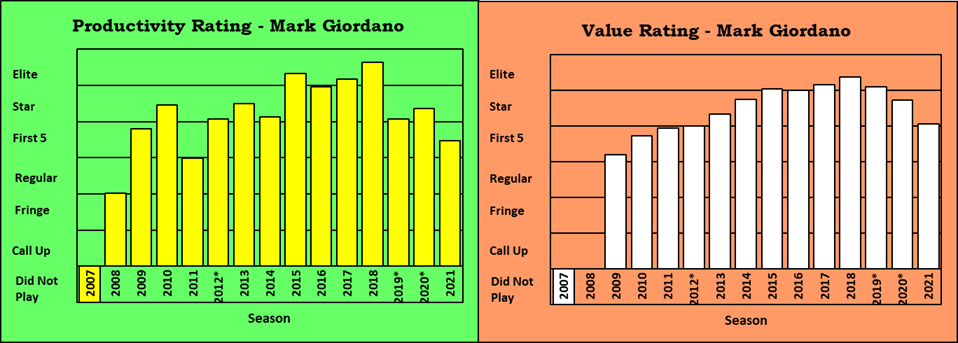
Giordano signing for the league minimum is a surprise: he was a VR-Star last year. While he is in a state of decline, he’s playing way better than Greene, Thornton or Chara.
He must be good with his money; he’s probably socked away some of the $60,000,000 he’s earned for playing hockey. And he probably figures this is his best way to getting his name on the Stanley Cup: leave a little money for Toronto to spend on other players.
Hall-of-Famer? Yes. Even though he is playing for Toronto.
Jason Spezza – 38
Here’s another player who makes me wish the data for the earlier part of his career were available. His best two seasons were almost certainly 2005/2006 and 2006/2007, when he was scoring about 105 points per 82 games played. The PR and VR charts show his data after he had started declining.
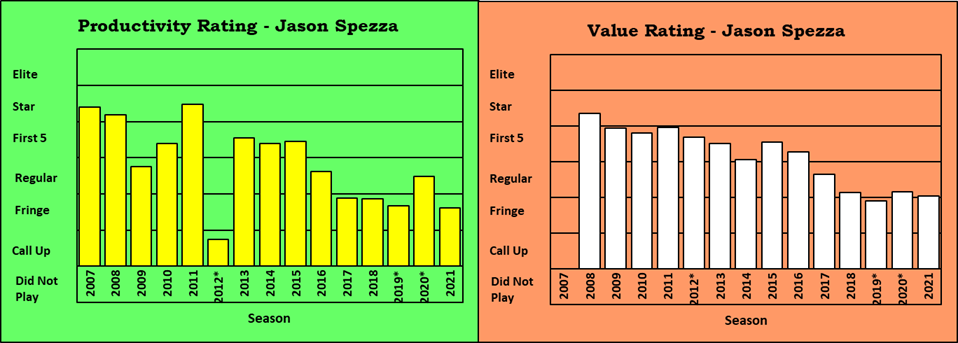
While missing a couple of games a year was normal for Spezza, he missed a lot of games in 2009, 2010 and 2012. He lost his scoring touch in 2016, and never found it again.
Is he a Hall-of-Famer? I’m a fan of the Ottawa Senators and of Jason Spezza, so it hurts me to say this: I don’t think he has had a Hall of Fame career. A more complete set of statistics from the start of his career might give him a total of five VR-Star seasons, and I just don’t think that’s enough.
Duncan Keith – 38
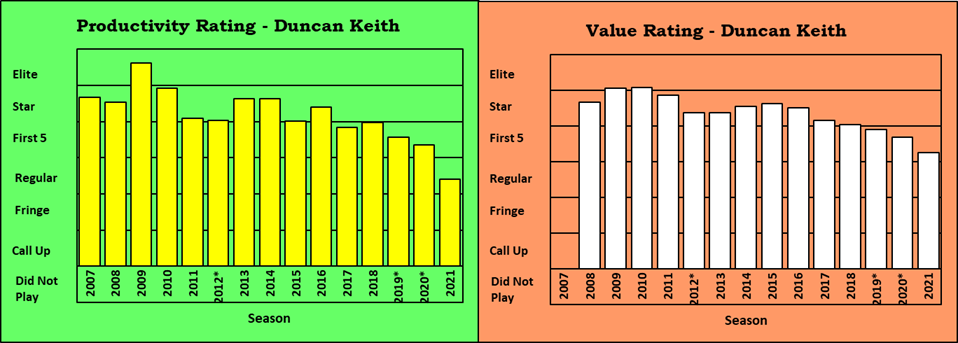
His first two seasons are pre-detailed-statistics, but I would guess they were both PR-First5 seasons. He was good early, and he stayed good for a long time. The first steep drop in his level of play was this last season in Edmonton, and he has announced his retirement.
Two VR-Elite seasons and nine VR-Star seasons: that’s Hall of Fame proof for me.
Joe Pavelski – 38
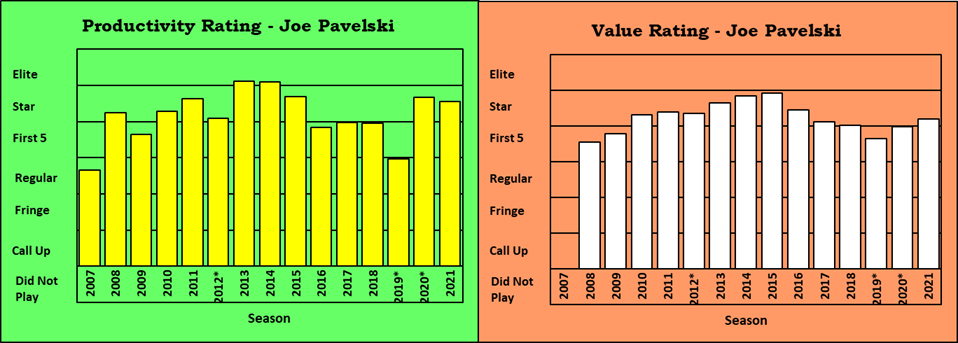
Every Joe in the league should have the nickname Joltin’. Joltin’ Joe Thornton; Joltin’ Joe Pavelski; Joltin’ Joe Corvo. Maybe not Corvo.
Pavelski’s career PR Chart fluctuates like he had injuries, but he was quite healthy. From 2011 through 2017, he missed one game: one game total in seven seasons. Except for 2009, he never missed more than eight games in a season.
I’d say that in 2010, 2011 and 2012 he played less well than would have been expected. His debut in Dallas in 2019 was a disaster, but his last two seasons have been quite good.
Is he Hall of Fame material? He’s got nine VR-Star seasons to his credit, so yes.
Zach Parise – 38
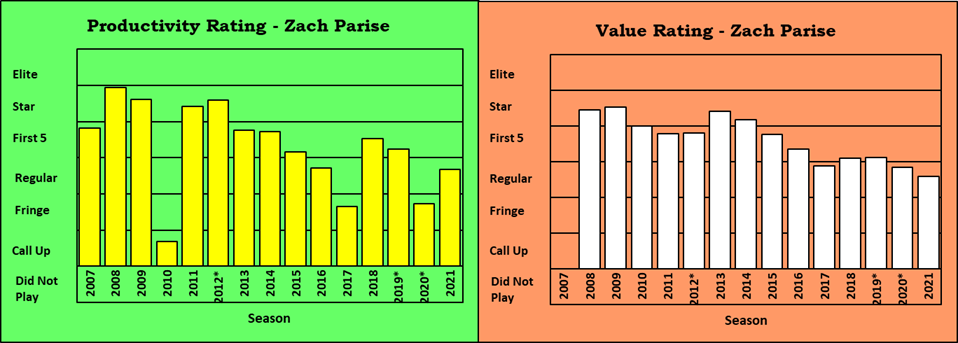
We’re missing detailed statistics from Parise’s first two seasons. Imputing from his scoring and games-played data, they were probably both PR-First5 seasons. He missed double-digit number of games in 2010, 2013, 2015, 2016, 2017 and 2020.
Is he a Hall of Famer? No. Could he have been, had he been healthier? Maybe: he might have had as many as nine VR-Star seasons if he’d been healthier.
Brian Boyle – 38
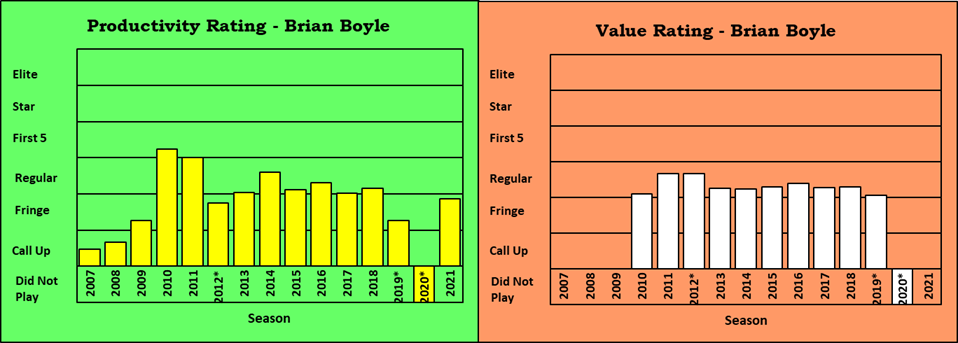
Considering his skill level, he sure got a lot out of his career. Did injuries reduce his statistics? Yes.
Is he a Hall of Famer? No. Could he have been, had he been healthier? No.
Dustin Brown – 38
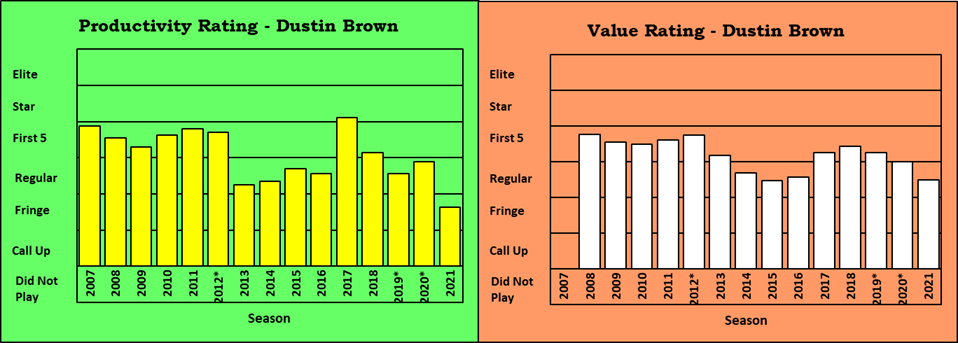
I like guys who play their entire career with one King, so I like Dustin Brown. He has never rated higher than VR-First5, which I consider to be a sure sign that he is not a Hall-of-Fame player. If long term first-line players are Hall of Fame material, they better start inducting 40 players a year instead of four.
Nate Thompson – 38
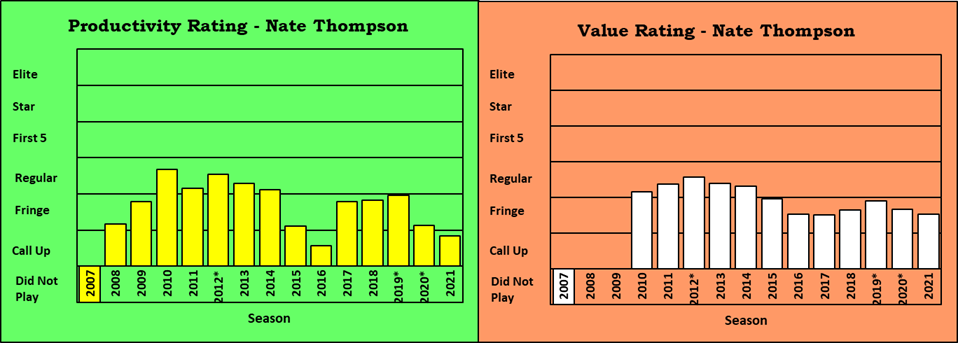
Thompson is another guy who got a long career, considering his talent.
Not a Hall of Fame candidate. He’s less of a candidate than Brian Boyle.
Summary
At some point in time of an NHL hockey player’s career they must have seemed like a god compared to their teammates and opponents: not the god, but a god. Some of the listed players would have seemed like a god in the NHL: they are probably hall-of-famers. Others might have felt like a god only in junior or midget hockey: they aren’t hall of famers.
